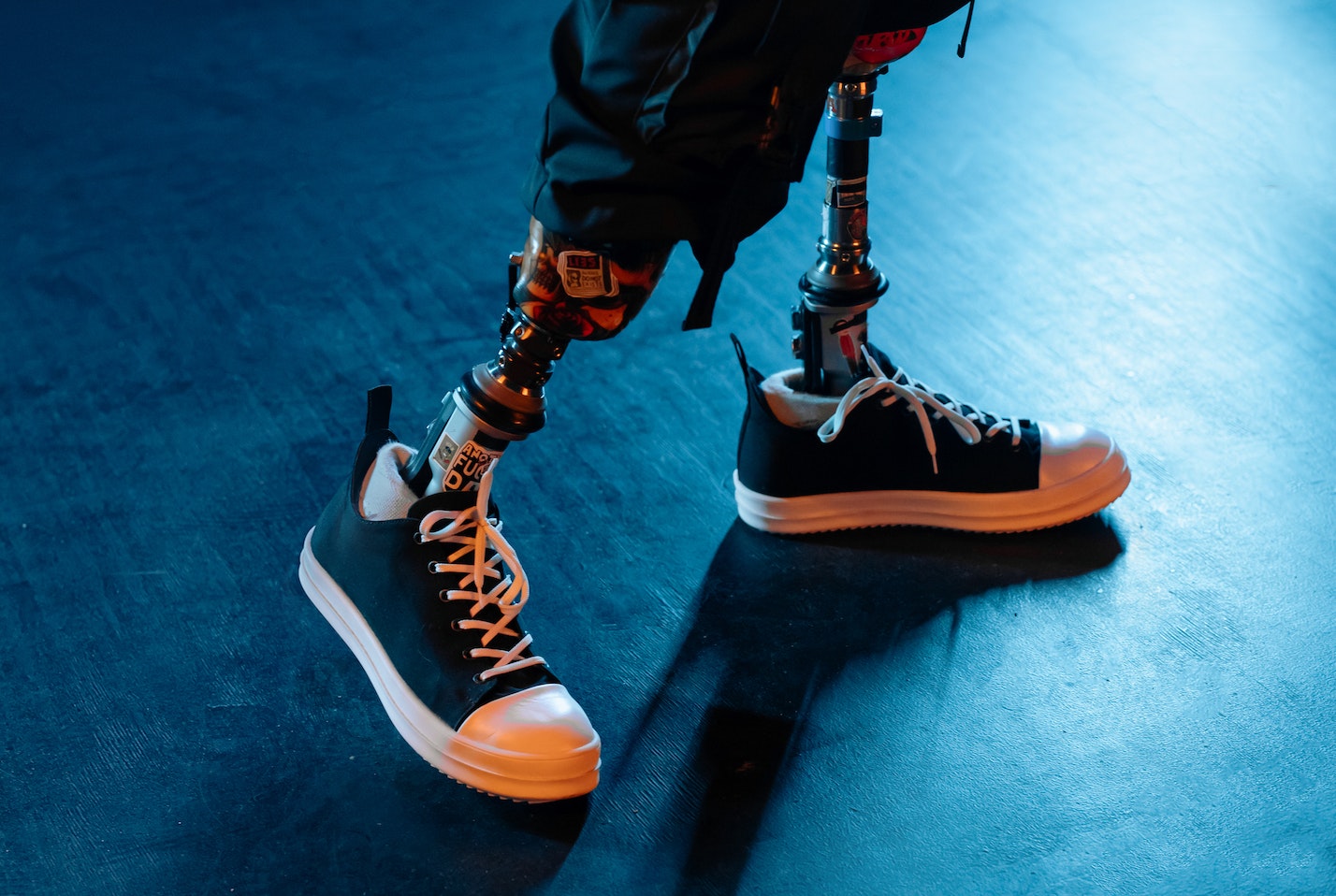We get many questions about how prosthetic limbs are made. Many people have questions about the manufacturing of prosthetic limbs. Below, we explain some of the different aspects and types of prosthetic limbs and what makes up each part.We will explain the various aspects and types of prosthetic legs and what each one consists of.
How Are Prosthetic Limbs Made?
The prostheses (prosthetic limbs) that are delivered to our clients are made up of parts which can be grouped into three broad categories: Prosthetic Socket, Prosthetic Components, and Consumables. Prostheses (prosthetic legs) delivered to clients are composed of parts that can be divided into three categories: Prosthetic Socket and Prosthetic Components.
The Prosthetic Socket is the upper part of the prosthesis which fits around your residual limb (AKA stump). The Prosthetic socket is the top part of the prosthesis that fits around your residual leg (AKA stump). This Socket is custom made onsite within the APC prosthetic workshop by our talented technicians. Our skilled technicians custom make this socket onsite at the APC prosthetic workshop. Below the socket are Prosthetic Components which include connective components (made of aluminium, stainless steel or titanium), prosthetic joints (such as prosthetic hips, knees, elbows and wrists), and prosthetic feet or prosthetic hands (also known as a terminal device). The socket is below the Prosthetic components, which include connective parts (made from aluminium or stainless steel), prosthetic joints such as prosthetic hips or knees, elbows or wrists, and prosthetic feet (also known to be a terminal device). These Prosthetic Components are ordered from suppliers to meet each client’s specific requirements. Prosthetic components are ordered directly from the suppliers to meet client requirements. Finally, consumables include items such as liners, knee sleeves, and socks which allow your prosthesis to comfortably hold on to your residual limb. Consumables are items such as socks, knee sleeves, and liners that allow your prosthesis to hold onto your residual limb. These Consumables, like Prosthetic Components, are ordered specifically for each client, featuring materials such as silicone, TPE, rubber and much more. These Consumables are similar to Prosthetic Components and can be ordered for each client. They include materials like silicone or TPE, rubber, and many other options.
Prosthetic Sockets
Diagnostic Socket Manufacturing
The process of having a prosthetic socket made begins with your prosthetist taking a plaster cast of your residual limb. Your prosthetist will take a plaster mold of your residual limb.This is then filled with plaster to become a plaster copy of your residual limb (positive plaster cast) which can be used to make a Diagnostic Socket or a ‘check socket’. The plaster is used to create a plaster cast of your residual limb. This can then be used to make a Diagnostic Socket or a check socket’. The primary aim of this clear plastic socket is to optimise the socket fit, refine the alignment, and ensure the prosthesis meets all necessary functional and comfort goals. This clear plastic socket’s primary purpose is to optimize the socket fit, align the prosthesis, and meet all functional and comfort requirements.
A diagnostic socket utilises materials which are suitable for a short-term trial period. The materials used in a diagnostic socket are suitable for a brief-term trial period. These include thermoplastic sheets which are heat blistered and vacuum moulded onto the client’s positive plaster cast. These include thermoplastic sheets, which are heat blistered then vacuum moulded onto the client’s positive plaster cast. Following this step, the socket is attached to a lamination anchor which provides the connection between the custom-manufactured prosthetic socket and the remaining prosthetic componentry. The socket is then attached to a lamination anchor, which connects the custom-manufactured socket with the rest of the prosthetic components. To ensure safety and security, the anchor is secured to the socket. The socket is secured to the anchor for safety and security. This can be done in a variety of ways from wrapping it in a fibreglass bandage, laminating carbon fibre or fibre glass
over it. It can be wrapped in a fibre glass bandage or laminated carbon fiber. Once this is achieved, the diagnostic socket is ready for trial! The diagnostic socket can now be tested!
Definitive Socket Fabrication
Once the prosthetic socket fit and alignment have been optimised, the diagnostic socket is ‘duplicated’ in an alignment jig creating an identical plaster mould whilst retaining the correct alignment of the connective componentry. After the alignment and fit of the prosthetic socket have been optimized, the diagnostic socket can be ‘duplicated” in an alignment tool to create an identical plaster mold while retaining the correct alignment for the connective components. Plaster or alginate is used in this step. This step uses either plaster or alginate. If the shape of the socket allows it to be removed from the positive mould, the client can continue to wear their check socket whilst an APC manufactures their ‘definitive socket’. If the socket shape allows it to be removed, the client may continue wearing their check socket while an APC makes their ‘definitive’ socket.
The materials used in making definitive prosthetic limbs can vary. There are many materials that can be used to make definitive prosthetic limbs. Factors include impact, weight of the user, activities that will be undertaken, method of suspension, socket design etc. There are many factors that can affect the final prosthetic limbs, such as impact, weight, activity, suspension method, socket design, and so forth. Most definitive sockets will be made using at least two separate laminations, although some are made using a single lamination. Although most sockets are made with at least two separate laminates for finalization, some sockets may be made with only one lamination.
Some prosthetic socket designs will incorporate a compressible liner (typically made of a material called pelite), PET-G or a flexible plastic inner depending on what the prosthetist has deemed most suitable for the client.A few sockets will include a compressible liner. This is usually made from pelite, PET–G or a flexible inner. It all depends on the needs of the client. If your socket has one of these features, this is fabricated first on the inner most layer to the plaster cast.This is done on the plaster cast’s innermost layer if your socket has any of these features. If not, the plaster cast will be first sealed with lacquer or similar (to prevent moisture leaving the plaster during the lamination).To prevent moisture from leaving plaster during lamination, the plaster cast should be sealed with lacquer.
Next an appropriate combination of materials including carbon fibre, fibreglass, stockinette, perlon and/or nyglass are layered over the cast, sealed under vacuum between PVA bags. The cast is then covered with the appropriate mixture of materials, including carbon fiber, fibreglass stockinette and/or perlon. Finally, seal the cast under vacuum between PEVA bags. Acrylic resin mixed with a hardener and sometimes a coloured pigment is then added. Acrylic resin mixed together with a hardener, and sometimes a colour pigmentis added. The resin penetrates the material fibres and solidifies the lay-up as the chemicals react, in a process called lamination. In a process known as lamination, the resin penetrates the fibers of the material and then solidifies it. The initial lamination is focused on creating a strong, structured framework. The initial lamination aims to create a structured framework.
The lamination anchor (or adapter) is attached with bog in a similar process to diagnostic sockets but using the alignment transfer jig. The lamination anchor, or adapter is attached to the socket using the alignment jig. The use of foam and putties allows for improved cosmesis and a smooth transition from the adapter to the socket. The second lamination utilizes similar materials to the first, however, its focus instead shifts towards strength and security of the lamination anchor to the socket.The use of foams and putties allows for a better cosmesis as well as a smooth transition between the adapter and the socket . However, the focus of this second lamination shifts to strength and security of lamination anchor to socket.
This layer can incorporate further colored pigments or fabrics to personalize your prosthesis and show off your personality. You can add colored pigments and fabrics to personalize your prosthesis and show off your personality. We can laminate most materials as the final layer in the socket allowing endless cosmetic possibilities. There are many cosmetic options available as we can laminate any material. Many clients opt for a specific design to finish their prosthetic sockets ranging from Indigenous Art to sports teams – there is such a variety! Many clients choose a particular design for their sockets. This can be anything from Indigenous Art to sports teams. Clients are encouraged to bring in fabrics, t-shirts, or designs which they desire on their final socket. Clients are encouraged bring in any fabrics, t-shirts or designs they would like to finish their socket. Sometimes a third clear layer of resin is needed to ensure a quality cosmetic finish is achieved when customizing with images. A third layer of clear resin may be required to achieve a high-quality cosmetic finish when customizing with images.
Interim Socket Fabrication
Your first limb following amputation is known as an interim prosthesis. An interim prosthesis is your first limb after an amputation. This is because it is only used for a short time, typically a period of a few months. It is usually only used for a brief time, often a few months. Why such a short time? Following amputation, your residual limb will shrink and change shape as the muscles waste away (muscle atrophy). Your residual limb may shrink or change in shape after an amputation. This is called muscle atrophy.
An interim socket is intended to be used during this initial period of rapid muscle atrophy. An interim socket can be used to support the initial phase of muscle atrophy. The time frame to stabilizing is different for everyone, as is the shape or how your muscles will change over time. Everybody is unique in the time it takes to stabilize. The shape and how your muscles change over time will also vary.
Interim sockets are made using similar prosthetic materials and methods as diagnostic sockets, for adjustability during the initial post amputation period. For adjustability during the initial period after amputation, interim sockets can be made from similar prosthetic materials and methods to diagnostic sockets. Once residual limb volume has stabilized, a new cast will be taken so that a diagnostic socket and later definitive socket can be manufactured. After the residual limb volume has stabilized, a new cast is taken to allow for the production of a definitive socket and a diagnostic socket.
Specialized Sockets
Exoskeletal socket fabrication
For a more cosmetically shaped prosthesis, the socket can be laminated down to the foot or hand and shaped to closely match the shape of your sound side limb, this is known as an Exoskeletal Prosthesis (Exo for short!). The socket can be made more cosmetically by being laminated to the foot or hand. This is called an Exoskeletal Prosthesis, short for Exoskeletal Prosthesis. This design removes the need for standard tube clamps and pylons (known as a modular or endoskeletal prosthesis). This design eliminates the need to use standard tube clamps or pylons. It is also known as a modular, or endoskeletal prosthesis. An exo design has a few extra steps involved. There are a few additional steps to an exo design.
Over the first lamination as above, the APC technician pours a two-part expanding foam around the socket on the transfer jig down to the adapter. After the first lamination, the APC technician places a two part expanding foam around each socket on the transfer tool. Then the technician attaches the adapter to it. Sometimes an aluminium or carbon puck is used, or in upper limb this is where the joint’s attachment site will be attached to the socket. An aluminum or carbon puck may be used. In the upper limb, this is the location where the joint’s attachment point will be attached to its socket. Once the foam is hardened, the technician precisely carves the shape of the limb according to the client’s measurements of their sound side. After the foam has hardened, the technician will precisely carve the limb to the client’s specifications. Exoskeletal prosthetic sockets include two additional laminations to gain strength and finish with a cosmetic appearance. Two additional laminations are added to exoskeletal prosthetic sockets for strength and cosmetic appeal. This style of socket is commonly used for upper limb prostheses, and for waterproof prostheses. This socket style is used for waterproof prostheses and upper limb prostheses. Some benefits of this design are that these prostheses are lightweight and have fewer components which might otherwise rust. These prostheses have many benefits, including being lightweight and having fewer parts that could rust.
Socket fabrication
The initiation of the National Disability Insurance Scheme (NDIS) has allowed many clients the opportunity to explore a recreational prosthesis such as running blades, rock climbing arms/legs, weight-lifting arms, surfing legs, cycling legs and many more. Many clients have had the opportunity to try out a variety of recreational prostheses such as running blades or rock climbing arms/legs. The custom design and materials used in prosthetics, allow for many recreational prostheses to be achieved.Many recreational prostheses can be made possible by the custom design and use of prosthetic materials.
The final definitive prostheses for recreational limbs reflect the great deal of detailed hours undertaken by both the prosthetist and technician to create custom-manufactured prosthetic sockets.|Prosthetic sockets for recreational limbs are the result of many hours spent by both the technician and the prosthetist to make custom-made prosthetic sockets.This follows the same steps as everyday and waterproof limbs, using similar materials and processes to laminate the socket.The socket is laminated using the same materials and processes as for everyday waterproof limbs.



